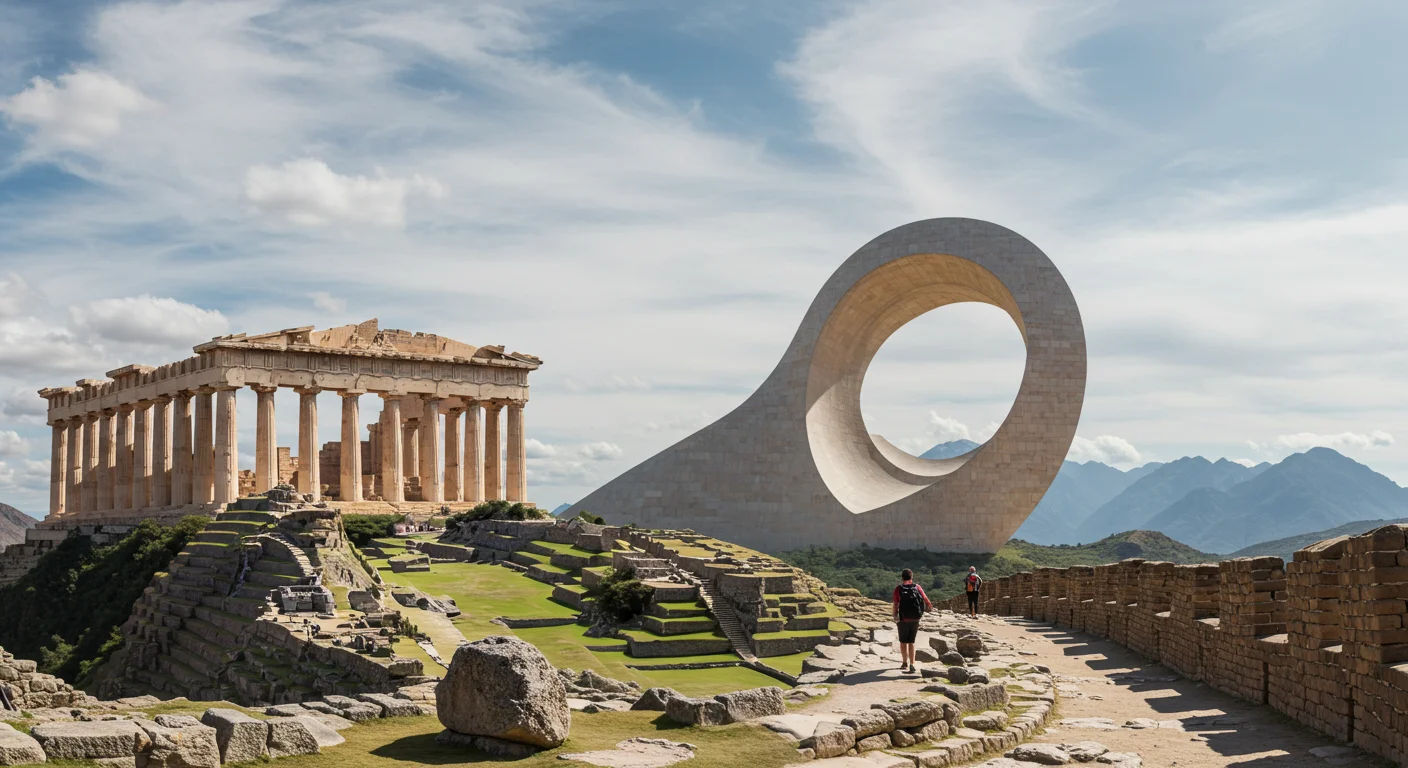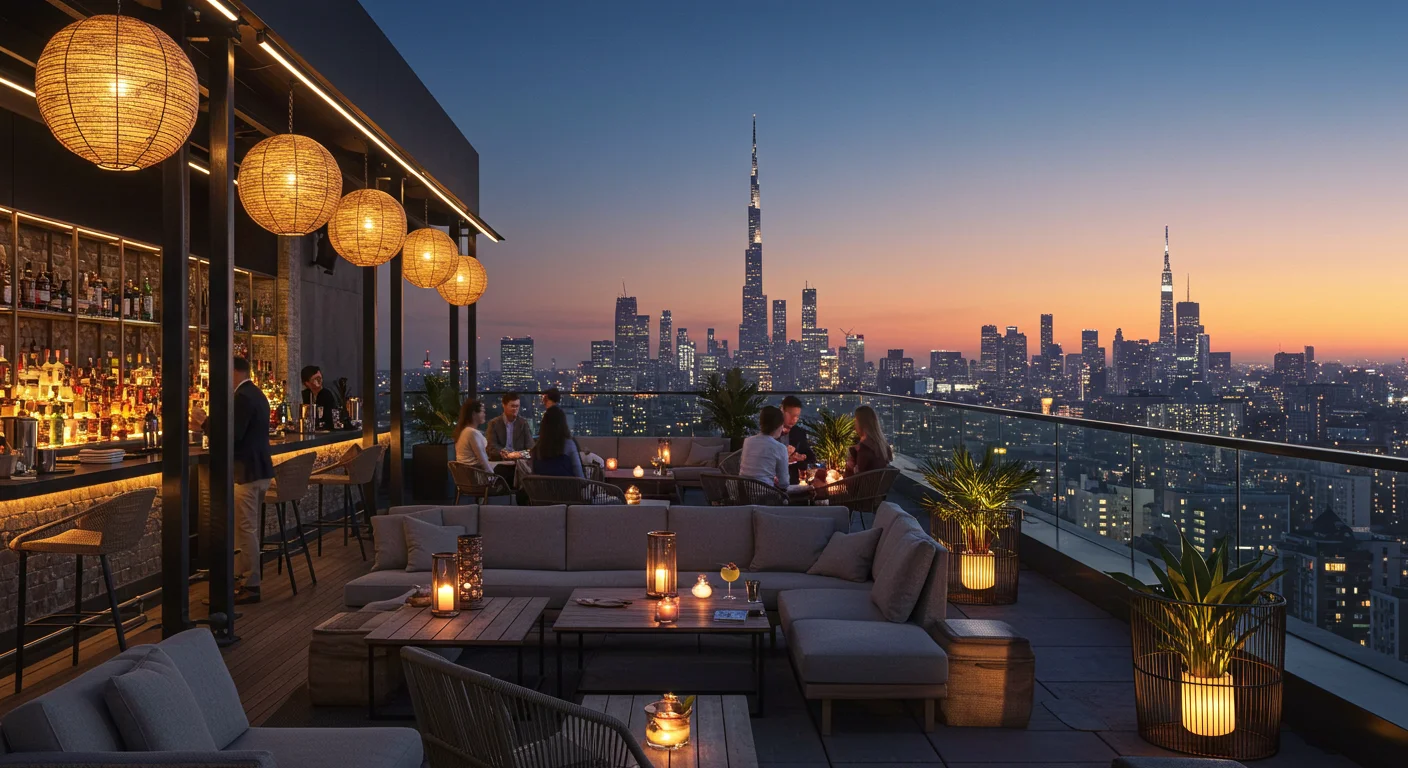Have you ever wondered why buildings look so different around the world? It is fascinating to explore **How Cultural Landmarks Inspire Modern Art and Architecture**, shaping our cities and reflecting who we are. Architecture is like a giant storyteller, conveying what societies care about, what they believe, and how they live. By looking at buildings from different times and places, we can see how people imagined their perfect homes and public spaces, based on their unique values, technologies, and environments. This article will journey through the many ways culture leaves its unique mark on the buildings we see every day, and how these traditions spark new, exciting designs.
The Deep Roots: How Geography and Beliefs Shape Design
The very ground we stand on, and the weather we experience, play a huge role in how buildings are designed. Imagine a cold place: homes there often have small windows, steep roofs, and thick walls to keep warm. Now think about a warm, sunny place like the Mediterranean: buildings there are open and airy, with cool central courtyards and shaded areas to escape the heat. In tropical areas, houses might have big overhanging roofs, bamboo walls that let air flow through, and floors raised off the ground to deal with humidity and rain. Even the materials available in a certain location, like wood, stone, or clay, influence the building styles that become popular. This connection between where a structure exists and its cultural appearance is very strong.
Beyond the weather, people's spiritual beliefs have profoundly influenced architecture for thousands of years. Sacred spaces are powerful symbols of faith. Think about tall Western churches, designed to make your eyes look up towards the heavens. Hindu temples often expand outwards, like the universe itself, with many rooms representing cosmic ideas. Chinese pagodas have curled roofs that look like they are reaching for the sky, decorated with carvings of animals and symbols of good fortune. Even some modern non-religious buildings might borrow these ancient religious styles to add deeper meaning or a sense of awe. This shows **How Cultural Landmarks Inspire Modern Art and Architecture** through spiritual expression.
Societal Stories: Status, Politics, and Community in Stone
Buildings often tell stories about who is important in a society. Grand palaces with fancy decorations clearly show the wealth and power of their owners. In contrast, working-class homes are usually simple and practical, focusing on getting the job done rather than showing off. Sometimes, even the way homes are designed shows how men and women lived differently, with some traditional houses having smaller rooms or screened-off areas that limited women's movement. Cultures that value togetherness might prefer buildings with shared spaces and communal areas, while cultures that focus on individuals might have designs that prioritize personal preferences and privacy. Even the size of a shelter can visually announce a person's social standing. This historical perspective on social status continues to influence how we design homes and public spaces today, even in modern architecture.
Public buildings, like museums or government offices, also display a society's values and political ideas. You might notice that many museums and city halls use elements from ancient Greek or Roman architecture, like columns and domes. These styles often suggest democratic ideals, inspired by early republics. On the other hand, some powerful regimes prefer huge, imposing buildings with grand facades to show off their strength and glory. Even the layout of parliamentary buildings and courtrooms changes over time, aiming for designs that suggest equality, openness, and the search for truth. Architecture subtly reinforces a communitys agreed-upon beliefs, becoming a canvas for political ideals. This continuous evolution illustrates **How Cultural Landmarks Inspire Modern Art and Architecture** in its civic expressions.
Innovation and Sustainability: Building Our Future
New technologies are always changing what we can build, and this also changes our ideas about what an ideal home or building should be like. For example, steel made modern skyscrapers possible, reaching incredible heights that were once unimaginable. Before that, reinforced concrete allowed for much more flexible spaces compared to older buildings that needed thick, load-bearing walls. Newer materials like synthetic stucco continue to offer different options for building exteriors. There is a lot of excitement now about 3D printed houses, and who knows what tomorrow's inventions will bring? The constant arrival of new building technologies pushes forward our ideas about living standards and architectural possibilities, blending seamlessly with evolving cultural needs.
Today, there is a growing worldwide agreement that we need to be responsible for our environment. This has led to a boom in sustainable architecture, which uses materials that can be renewed and designs that fit well with nature. Whether it is buildings with solar panels, health centers with living green roofs, homes made from recycled shipping containers, or entire eco-cities designed for walking and relying on clean energy, a shared global commitment to protecting the planet is uniting cultures through architecture. This push for sustainability is a powerful example of **How Cultural Landmarks Inspire Modern Art and Architecture** in a new, globally conscious way. The concept of building lightly on the land is becoming a universal cultural value, influencing designs from small homes to massive urban developments.
Global Connections: Blending Styles and Embracing Diversity
Even as distinct local architectural styles continue, there is also a fascinating blending of cultures as people move and ideas spread across the globe. You might see Nordic furniture, known for its clean lines and natural materials, looking perfectly at home in a Japanese hotel that values quiet simplicity. Or, modern medical facilities in China might combine peaceful, flowing waiting rooms designed using traditional Feng Shui principles with sterile, efficient Western treatment halls. This thoughtful mixing of cultures through architecture shows a beautiful fusion. It is like different traditions are having a conversation and finding ways to fit together harmoniously.
In our connected world, we are seeing more and more of this blend of international styles. It is part of what is called post-modern revivalism, where old ideas are re-imagined in new ways. This also includes designing buildings that are accessible to everyone, no matter their physical abilities, and incorporating strong environmental ethics like using renewable materials and energy-efficient building methods. Many contemporary designs intentionally mix international aesthetics, celebrating the richness of our globalized world. Knowledgeable examination of modern structures can reveal these embedded cultural clues through choices like the priority of private versus public spaces, how accessible a building is, its technological features, and even philosophical principles like Feng Shui. These elements demonstrate **How Cultural Landmarks Inspire Modern Art and Architecture** through a global lens.
Iconic Examples: When Culture Takes Form
Many of the most famous modern buildings are direct results of cultural inspiration. The Guggenheim Museum in Bilbao, Spain, with its swirling titanium and glass, was designed to reflect the citys industrial past, especially its shipbuilding and steel manufacturing, while also capturing the dynamic nature of the sea. It became a symbol of Bilbao's transformation from an industrial city to a center of art and culture, famously sparking the Bilbao Effect which revitalized the city. In Dubai, the towering Burj Khalifa, the worlds tallest building, draws its design from the desert flower Hymenocallis and incorporates patterns found in Islamic architecture. It symbolizes Dubais rapid growth and ambition to be a global leader. These structures are not just engineering marvels; they are powerful cultural statements.
Another inspiring example is the Lotus Temple in New Delhi, India. Its design, like a lotus flower, represents purity and peace, ideas deeply important in Indian culture. This Bahá’í House of Worship is open to all faiths, making it a symbol of unity. Similarly, the Beijing National Stadium, known as the Bird's Nest, for the 2008 Olympics, broke away from traditional stadium designs with its open, inviting steel framework. It symbolizes China's leap into modernity and its future aspirations. These buildings clearly show **How Cultural Landmarks Inspire Modern Art and Architecture** by taking specific cultural ideas and turning them into breathtaking physical forms that define a nation's image. They become beloved landmarks, not just for their beauty, but for what they represent.
The Enduring Legacy: Culture as the Foundation of Design
As we have explored, architecture is much more than just putting bricks and steel together. It is a powerful way that cultures express their values, beliefs, and priorities. By looking at how buildings have changed throughout history and across different regions, we can gain deep insights into how different civilizations imagined ideal living conditions for their times. This includes understanding local factors, what construction methods were available, spiritual systems, access to resources, climate considerations, technological innovations, and how people wanted to show their social status.
The built environment is like the backbone of civilizations, turning the invisible forces of society into human habitats. Studying these physical forms allows us to glimpse the spirit of cultures that have shaped our shared, yet wonderfully diverse, human family throughout history. Just as no two buildings are exactly alike, no two cultural architectural expressions are identical. Architecture is constantly bringing cultural values to life in creative and amazing ways. It is truly remarkable to see **How Cultural Landmarks Inspire Modern Art and Architecture**, ensuring our past continues to shape our future.




